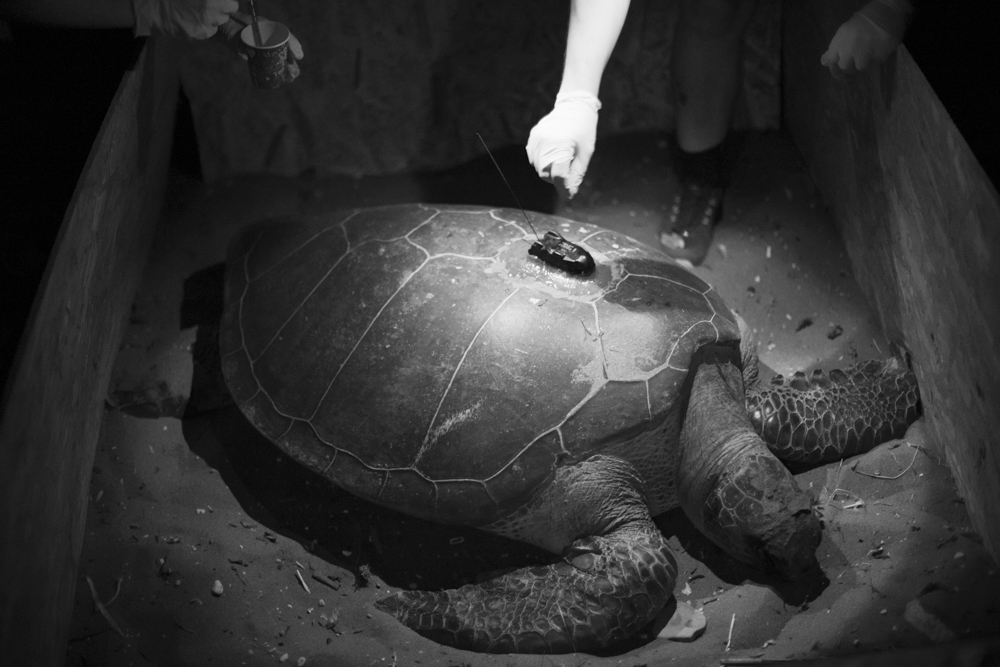TRACKING
Where they go and what they do
THIS YEAR WE HAVE A SPECIAL TRACKING STORY:
KATIE’S STORY
G055 is the 55th green turtle we encountered at Alagadi and we have been monitoring her since 1995, so it is likely that she is over 50 years old now. In 1999 we tracked G055 to Egypt where she seemed to be resident, although the tag failed early. In 2003 she was back, and this time we tracked her to Libya. Two decades on, in June 2022, we noticed G055 was back at Alagadi. We therefore are excited to be able to attach a GPS transmitter and dive data logger during her final nest, to see whether she remains faithful to her old foraging site in Libya’s Gulf of Sirte. G055 was adopted in 2022 by the family of Katie Devlin to whom we are very grateful, and who named G055 Katie. Follow Katie here and use this link to share her progress

The moment the transmitter was attached to Katie (G055) on Thursday, 29 July2022 (Photo: Olkan Ergüler).

DIpkarpaz green turtle trackIng 2018-2019
First Tracking of Nesting Green Turtles from Karpaz Peninsula to Foraging Grounds - Funded by MAVA/p>
